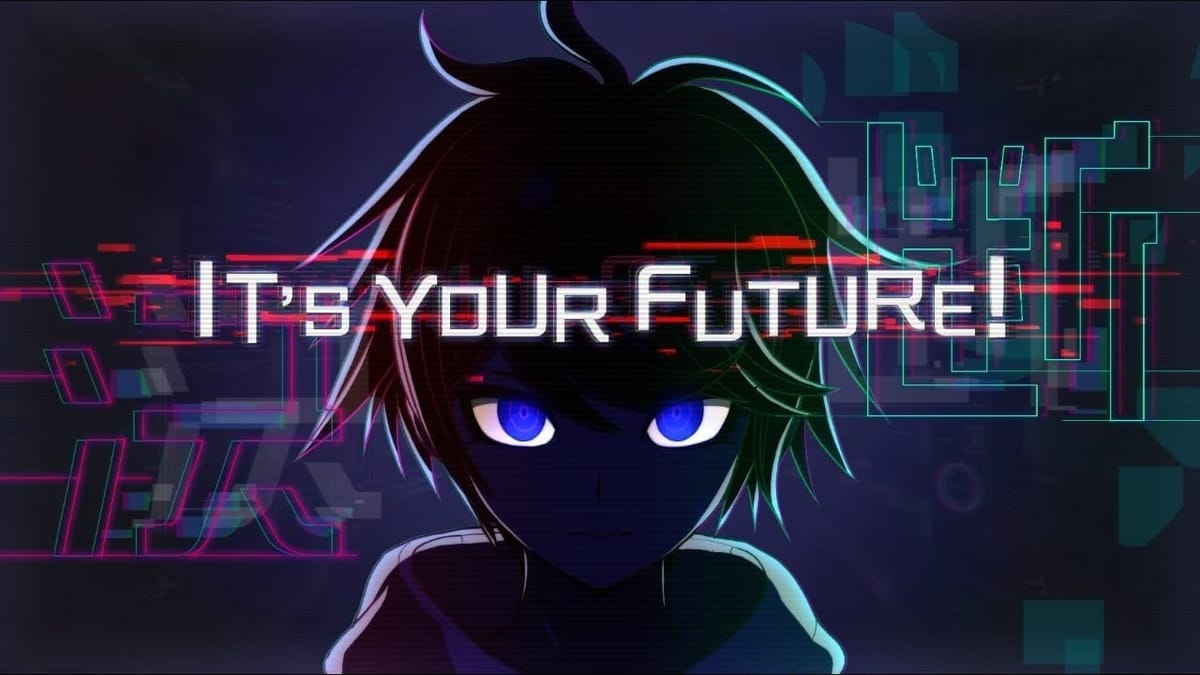
Spoiler Warning: Light spoilers for the demo's contents.
The June 2024 Nintendo Direct was jam packed with hype announcement after hype announcement; The return of Mario & Luigi, a brand-new top-down Zelda, the re-reveal of Metroid Prime 4, on top of pipedream third party reveals. But one game among this treasure trove of announcements stood above them all to capture my attention. The Hundred Line -Last Defense Academy-; a collaboration between two legendary visual novel writers Kazutaka Kodaka (Danganronpa, Rain Code) and Kotaro Uchikoshi (Zero Escape, AI: The Somnium Files). The former has written one of my favorite endings in fiction, and the latter has written some of my favorite stories in fiction.
While their company TooKyo Games has released multiple projects over the years, including another Kodaka and Uchikoshi collaboration with World’s End Club, Hundred Line was the first project these two creators worked on when they formed the company in 2017. Despite a rough production and the company's financial hardship , the game’s April 24th release date is inching ever closer. Aniplex was kind enough to provide Gaming Trend with an early look at the demo ahead of its public February 18th Steam release.
The premise of Hundred Line revolves around monsters attacking the town of Tokyo Residential Complex. During the chaos, a small mascot creature named Sirei whisks 15 students away and traps them inside a school called the Last Defense Academy. He subsequently tasks them with the lofty goal of saving humanity, which would be achieved once the students defend the campus for 100 days. The demo covers the first seven days, which took about four hours to get through.
Let’s rip the band-aid off right away. This is a concept nearly identical to Kodaka’s Danganronpa, where 16 students are trapped inside a school by a mascot creature named Monokuma with an outside world also in chaos. The difference lies within their escape condition, with DR’s getting away with killing another student versus Hundred Line’s working together with the other students to not get killed. Their similarities was something I was cautious about since the game’s announcement, and after finishing the demo I just want to say up front that I had a blast going through it… even despite the demo’s contents bringing most of my fears about Hundred Line being derivative of Kodaka's past works into fruition.
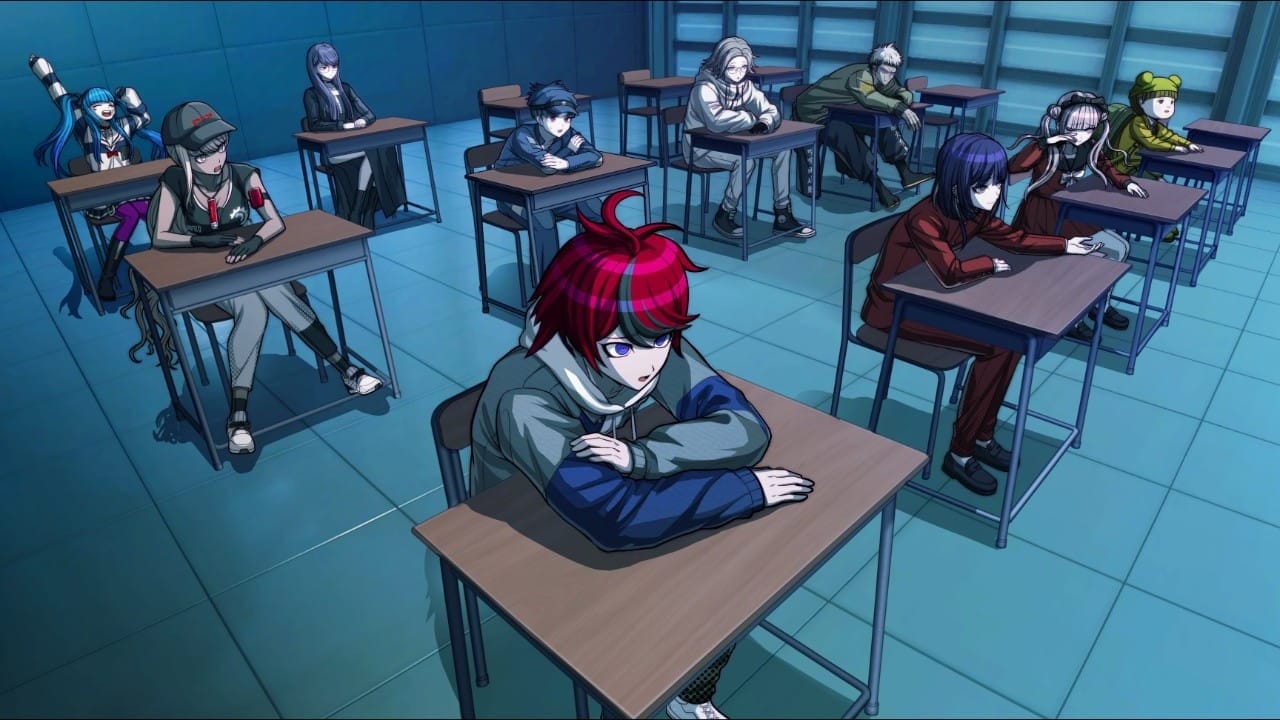
The imagery of the characters waking up in the school is the same as DR, even being drawn at the same angle. Sirei’s introduction cutscene is framed exactly the same as Monokuma’s. Even their morning and curfew announcements are similar, fit with the iconic “ding dong bing bong” chime. Exploring the school plays the same as the 2D side scrolling segments of Danganronpa 2. The music while great shares similar melodies to DR’s, even being accompanied by the same instrumentation. Not even the sound effects are safe from being reused. The cherry on top is the existence of a character whose dialogue primarily revolves around explicitly calling out the similarities between their situation and killing game media. Essentially spouting out Danganronpa, Zero Escape, and other pop culture references. Overlap is to be expected when DR’s creative team is at the helm of this project, but not even their previous project Rain Code went this far.
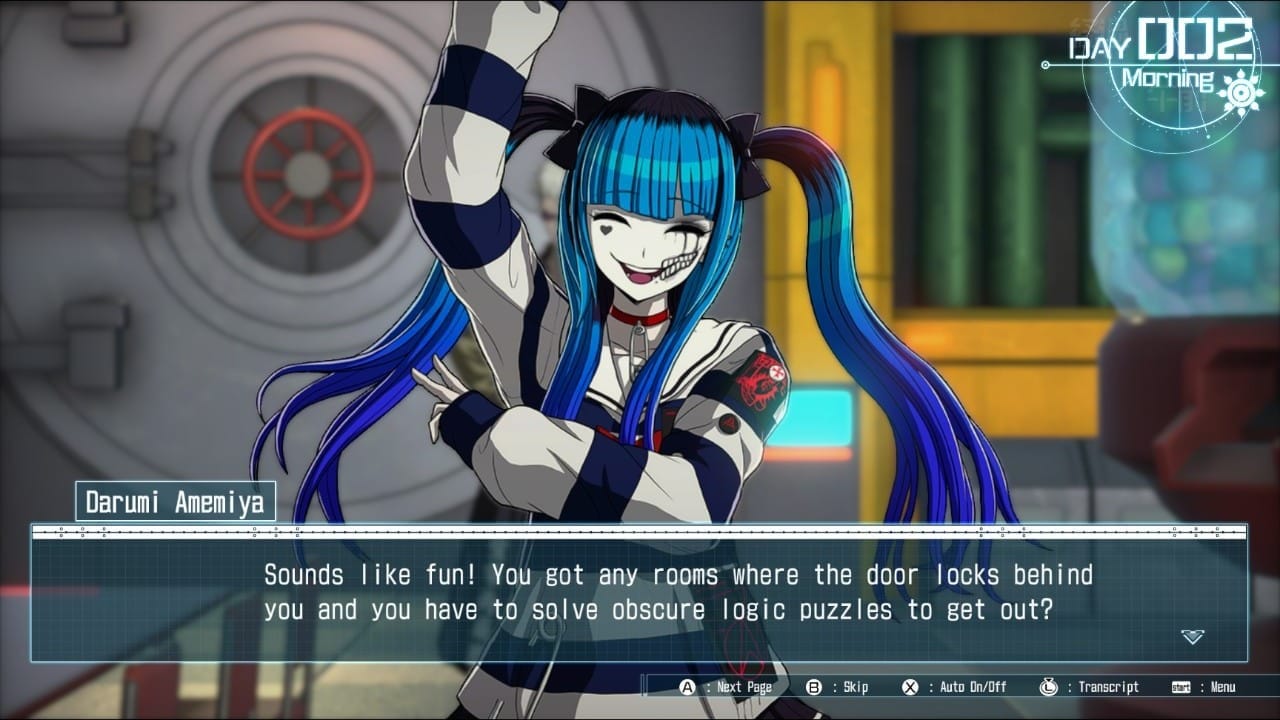
Yet it is important to note that similar doesn’t mean bad. Were the parallels too excessive for me? Yeah, there’s no skirting around that. But for players who haven’t played Danganronpa, I think this will be a non-issue. Even then, I want to reiterate that I had a blast going through the demo. While a derivative formula, it is still one that has its hooks in me. Seeing characters do their best to process and scrounge their way through a deadly predicament is effective at getting me invested.
Moreover, the reason why I wanted to tear this band-aid off first was because the unique aspects of Hundred Line are brimming with potential. Mainly the mystery and intrigue about the invaders, and why the Last Defense Academy students are the ones to bear the fate of the world. Thankfully, these aspects are peppered through the demo, and what the narrative gears up to focus on moving forward.
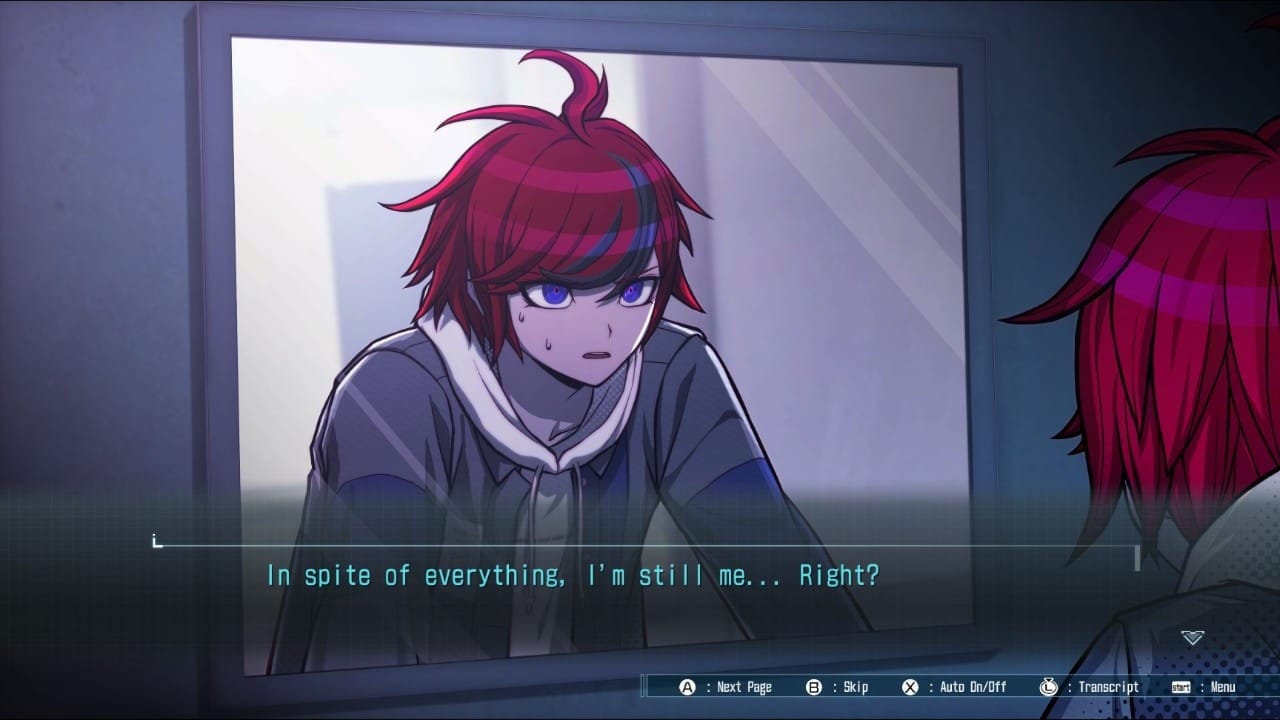
Unlike Danganronpa and Uchikoshi’s Zero Escape, the game dedicates considerable time in its lengthy opening cutscene showing the daily life of protagonist Takumi Sumino leading up to the invasion. His narration emphasizes the ordinary and mundanity of the Tokyo Residential Complex, partaking in the same daily routine with rarely any deviations. Despite the dullness, Takumi enjoys this peaceful life he shares with his family and childhood friend Karua. Thus, when the monsters suddenly attack on one of these ordinary days, we are aware of his emotional stakes. Additionally, having the cast encounter the main threat from the get-go results in both the characters and the player not going in completely blind about why they are trapped inside the school.
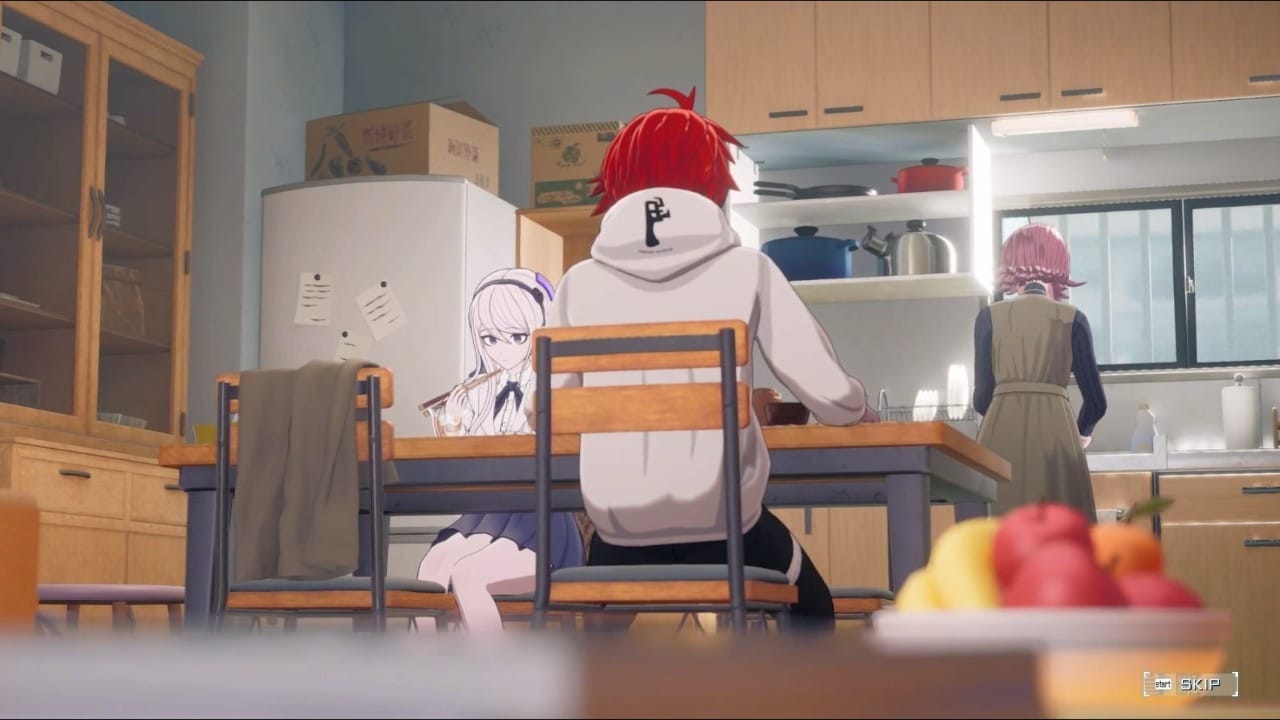
Framing the central conflict around defending the school instead of a killing game means cooperation is a focus from the get-go, which is a breath of fresh air for this writing duo. There is still distrust and tension among the party, but with no incentive to murder each other, tensions and conflict arise in natural ways. All the characters want to find the most effective method for everyone to escape safely, but share differing opinions on how. Some want to fight their way through the 100 days, others are too afraid of going into battle and want to run, and a few don’t fully believe in the situation they are put in.
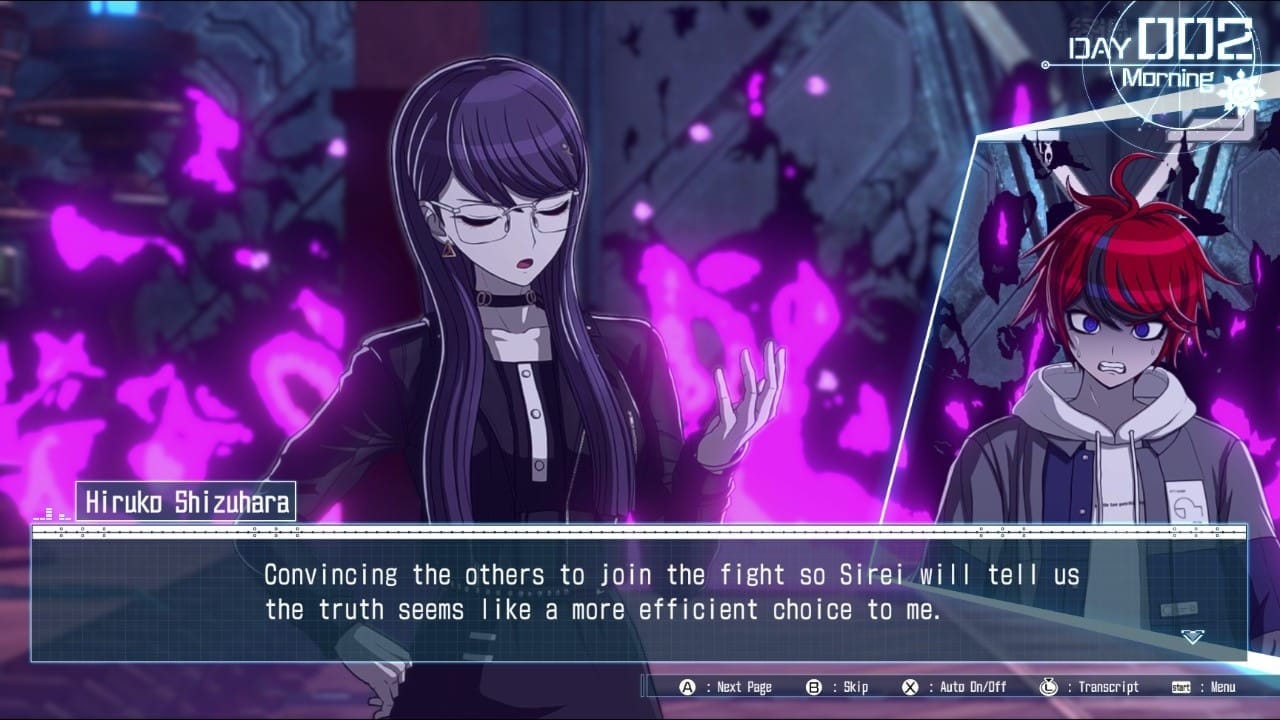
That being said, I wasn’t able to glean much of the cast during my playtime. There are seeds planted for each character showing more to them than meets the eye, especially the four characters the first week focused on introducing the RPG tutorials, but no one outside of Takumi felt particularly fleshed out. However, this is still very early on in the game, so I am interested in learning more about the cast and their personal struggles as the days march on.
What the story does focus on within the first week is familiarizing the characters and player with the scenario they are thrusted in. As mentioned before, the overarching mystery revolving around the invaders and the role the students play in saving humanity is the most compelling part. These are kids plucked from their ordinary lives and drafted into war they didn’t know existed until the start of the game. Some idolize the heroism. Others revel in the carnage. Most are just plain scared.
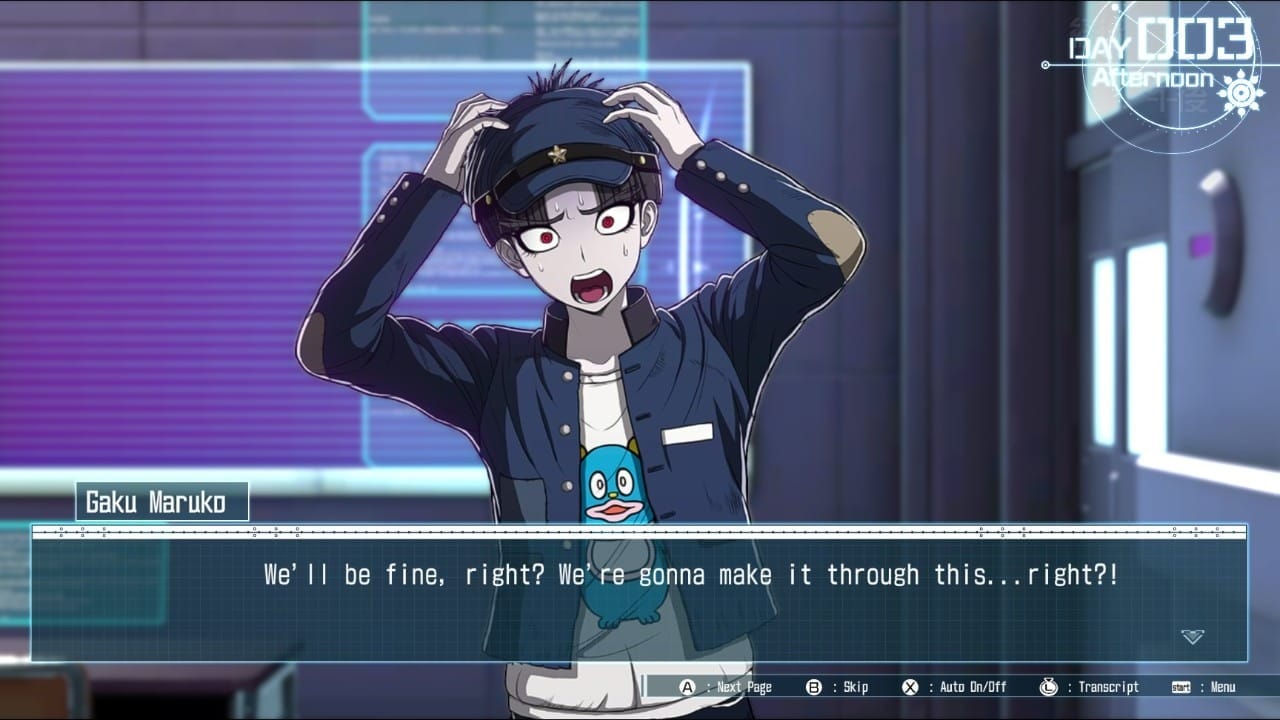
Admittedly some of Hundred Line’s pacing in establishing its mysteries is pretty weak, with some days feeling like filler to keep the day counter ticking. It has been confirmed that the game will have a branching narrative, the storytelling structure Uchikoshi utilized in both his Zero Escape and AI: The Somnium Files series. I am hoping this will add shocking story reveals and emotional character moments at a strong pace. We got a glimpse of one choice at the start of the game where Takumi had the option of choosing to fight to save his childhood friend from the monsters, or not. But that was a decision with a right or wrong choice to railroad the player into kicking off the inciting incident.
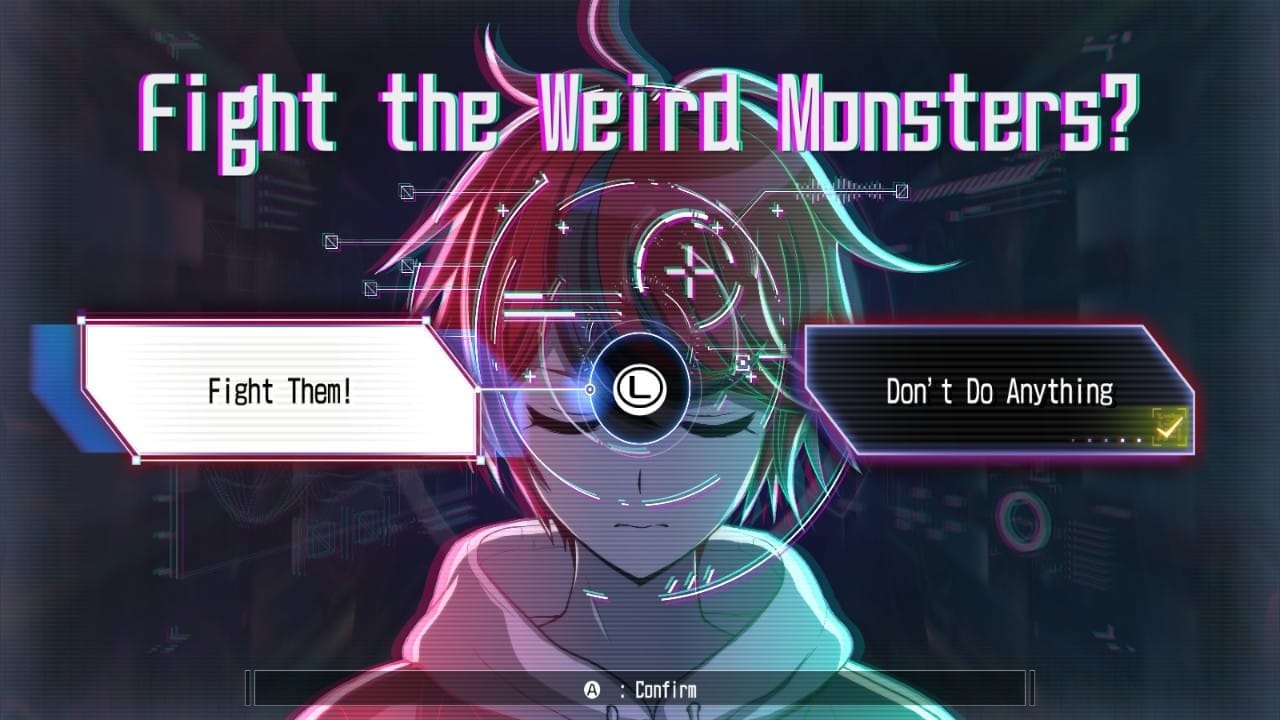
Before touching on the gameplay aspect of this visual novel RPG hybrid, I want to delve into the game’s performance and presentation. My time with the demo was spent entirely on Steam Deck, and I’m glad to report that it runs flawlessly, even during battles. Danganronpa v3 and AI: The Somnium Files both have performance issues, so I’m relieved that Hundred Line so far doesn’t follow that same trend.
While there are some lackluster elements to the presentation, such as the awkward moving 3D models during cutscenes, the atrocious lip syncing, and hit or miss character designs, the art direction is superb. The visual contrast between the cast’s two conflicting lifestyles is the aesthetic highlight thus far, bringing the world building and character stakes to life.
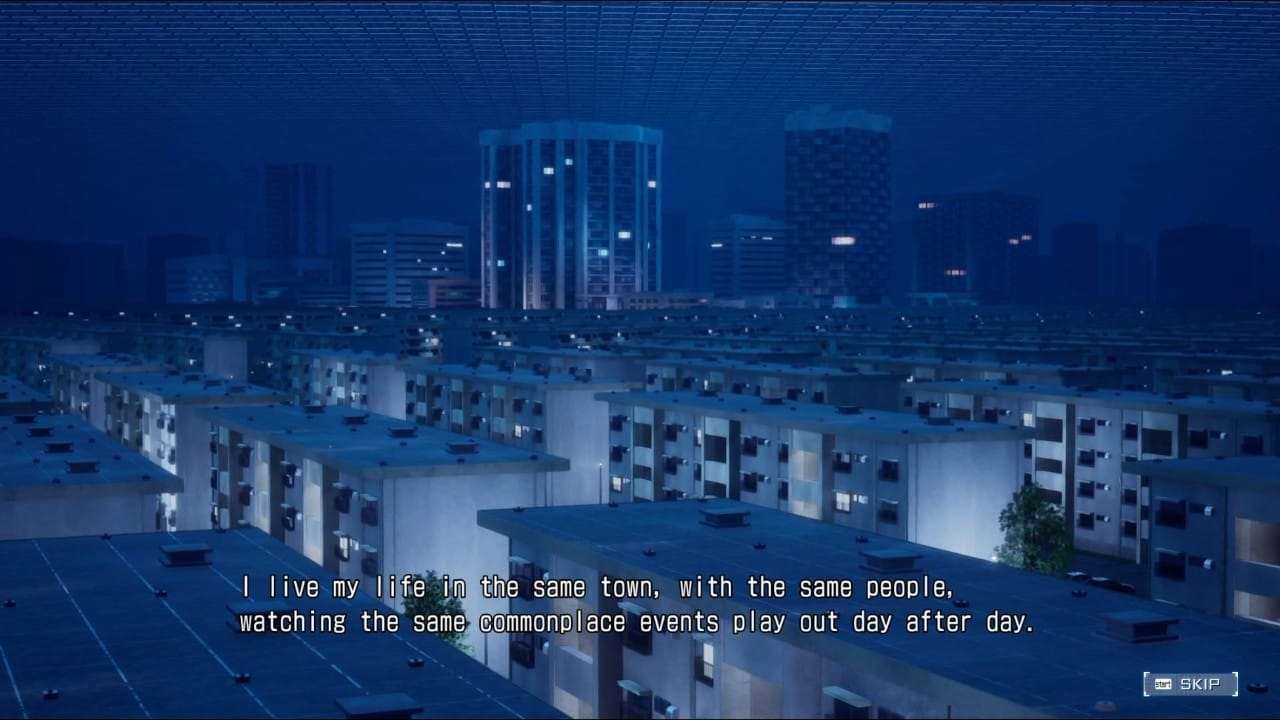
The uniform buildings in Takumi’s hometown stretch as far as the eye can see, coloring the city with a dull ivory. A barrier confining the townsfolk in the TRC acts as an artificial sky for the people to gaze upon. In contrast, the Last Defense Academy mashes a cyberpunk aesthetic to its school campus setting. Purple fire called the Undying Flames surrounds the school like a prison of violet light, the embers rising towards the freedom of the characters seeing the blue sky for the first time.
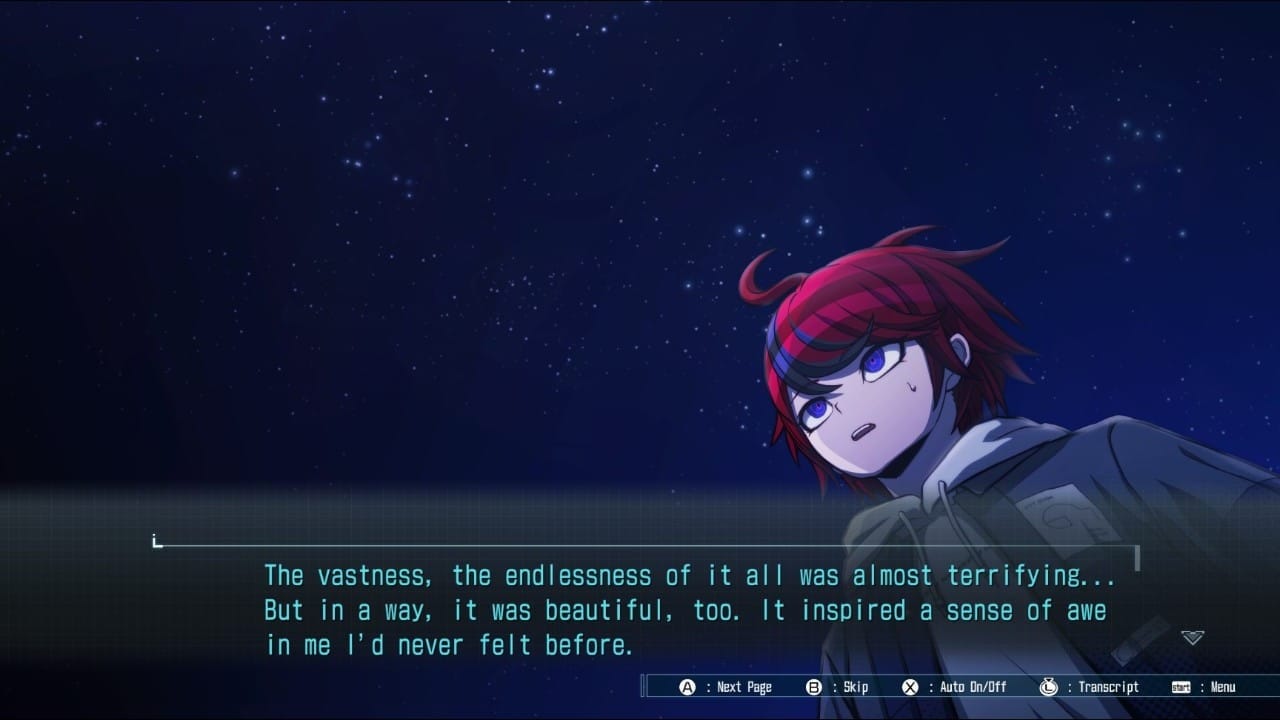
These shades of blue and purple are splattered red when the students enter battle, whether it’s being slain by the monsters, or stabbing themselves in the heart to activate their Hemoanima ability. Yeah, this power activation method is admittedly a bit try-hard edgy, but the cutscenes of the characters activating their powers were cool enough that I personally dug it. One character even references Persona 3, so that’s a win in my book.
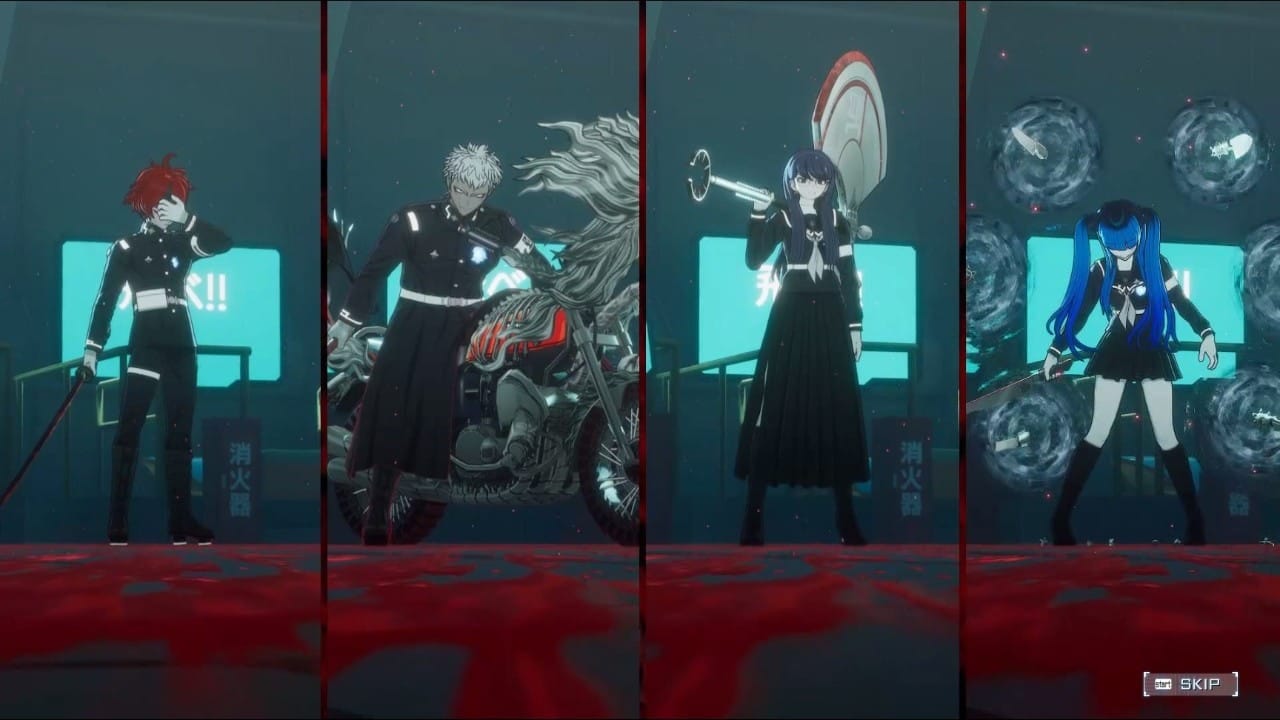
Hundred Line’s gameplay can be divided into three components: Free Time, outside exploration, and battles. For those familiar with Danganronpa, Free Time plays out in a similar fashion. The player can explore the different floors of the school through a side scrolling perspective akin to Danganronpa 2. When interacting with characters, Takumi can spend time with his comrades to level up various social stats. While there is confirmed to be more in depth social mechanics including gift giving, these interactions in the demo lasted less than a minute. As it stands, Free Time feels similar to the monastery sections in Fire Emblem: Three Houses rather than the feature of the same name in DR. To further add to the Fire Emblem comparison, the player can spend this chunk of time training by doing simulated battles, or exploring the outside world.
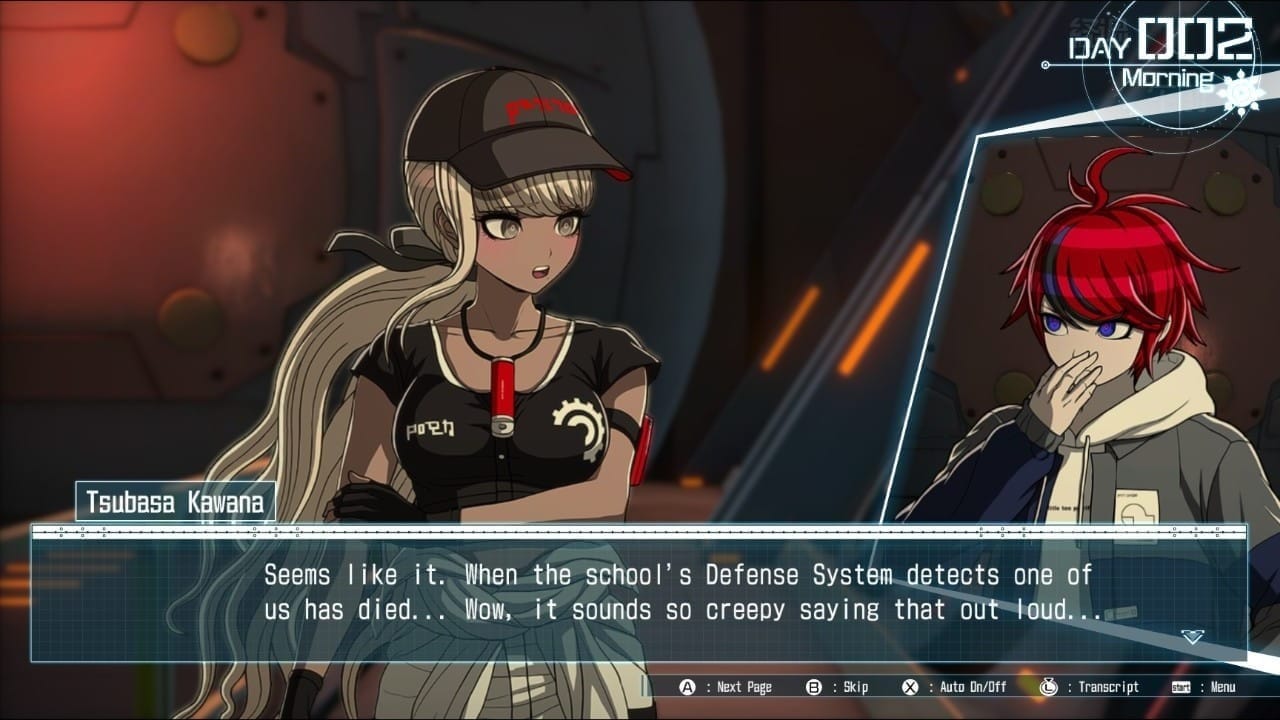
Exploration has the characters venturing past the protective walls of the school to scavenge for loot or, in one story mission, navigating branching pathways to reach a destination. The way this plays out was not what I expected, as movement is portrayed entirely through a board game. Each turn the player is given two cards with different values that determine how many spaces the explorers can move. Each space the crew lands on provides differing levels of risk versus reward stakes depending on the color of the space. There is a small blurb of flavor text describing the scenario and consequence of each event space, which essentially boils down to if the party got treasure, or if they took damage. Minor battles can take place as well, bringing action to a laid-back gameplay style.
In spite of my initial hesitation at seeing a board game in a strategy RPG visual novel, I dug the bits I went through. The gameplay premise is extremely simple, and the short length of these sequences serves as a relaxing palette cleanser in between battles and story sections. Here’s hoping that they don’t get stale further into the game.
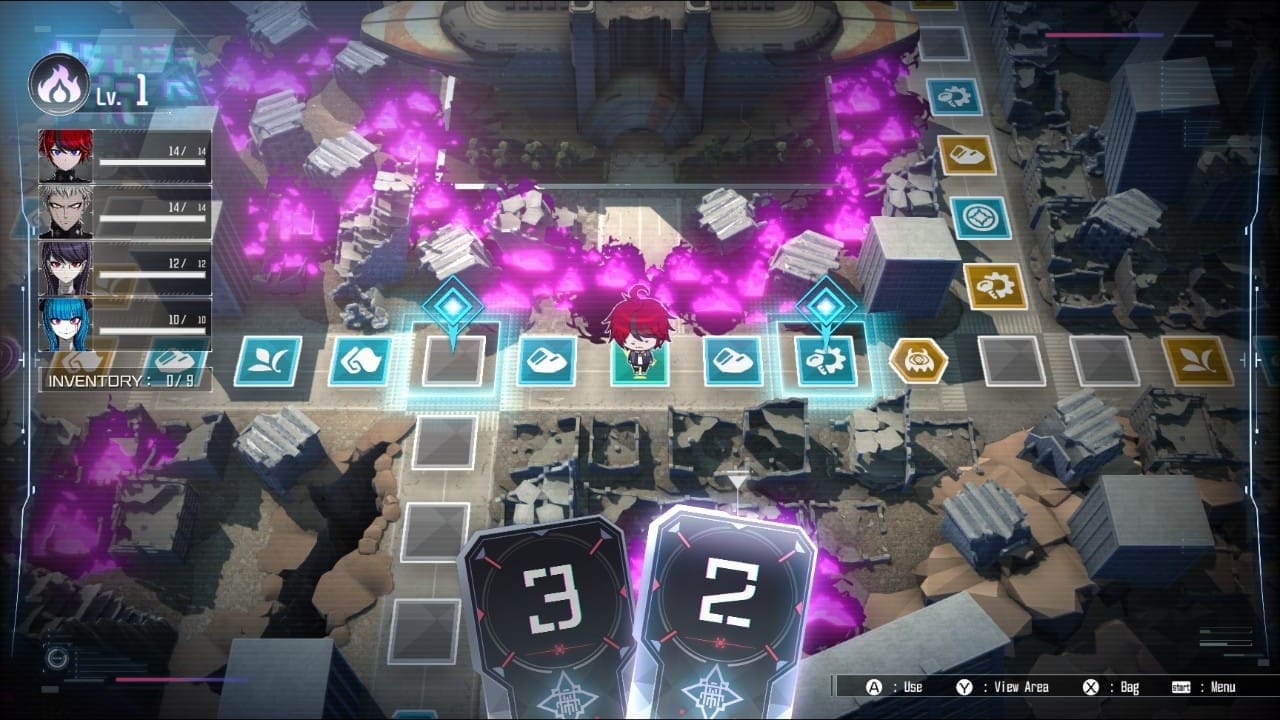
As for Hundred Line’s battles, these sections are primarily developed by Media.Vision, the studio behind other RPG series such as Wild Arms and Valkyria Chronicles. The start of the story only provides a few units to try out for each skirmish, but it is enough to get a glimpse at what the combat system has to offer.
What the player can do during a given turn is dictated by the amount of Action Points (AP) in the top left corner. Characters can spend an Action Point to dash, defend, or go on the offensive. Once an action has been expended, that squad member enters a tired state. My favorite aspect revolving AP is how characters who are tired can still spend another point, with the caveat that they can only move a singular space on the map if they want to attack. If not all AP is used during a single turn, they can be banked and added to the next turn.
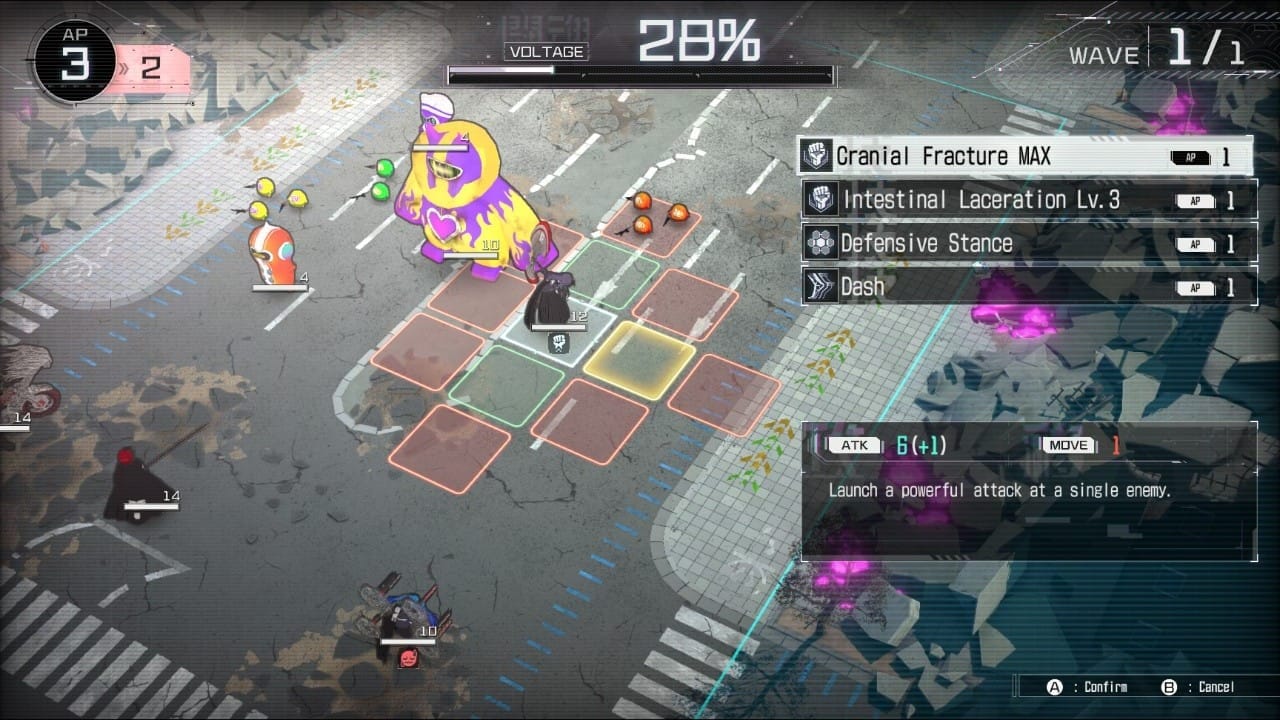
As AP gets expended, a voltage meter at the top of the screen builds up. Once it reaches 100%, multiple options can be utilized. These include buffing a unit’s attack power, bypassing the singular space restriction if they already took an action, or use a powerful AOE damaging attack unique to each squad member. Regarding other character differences, each one has a distinctive passive ability to give them an edge in battle. One character gains a temporary defense buff every time he attacks. Another changes up her moveset once she enters the tired state.
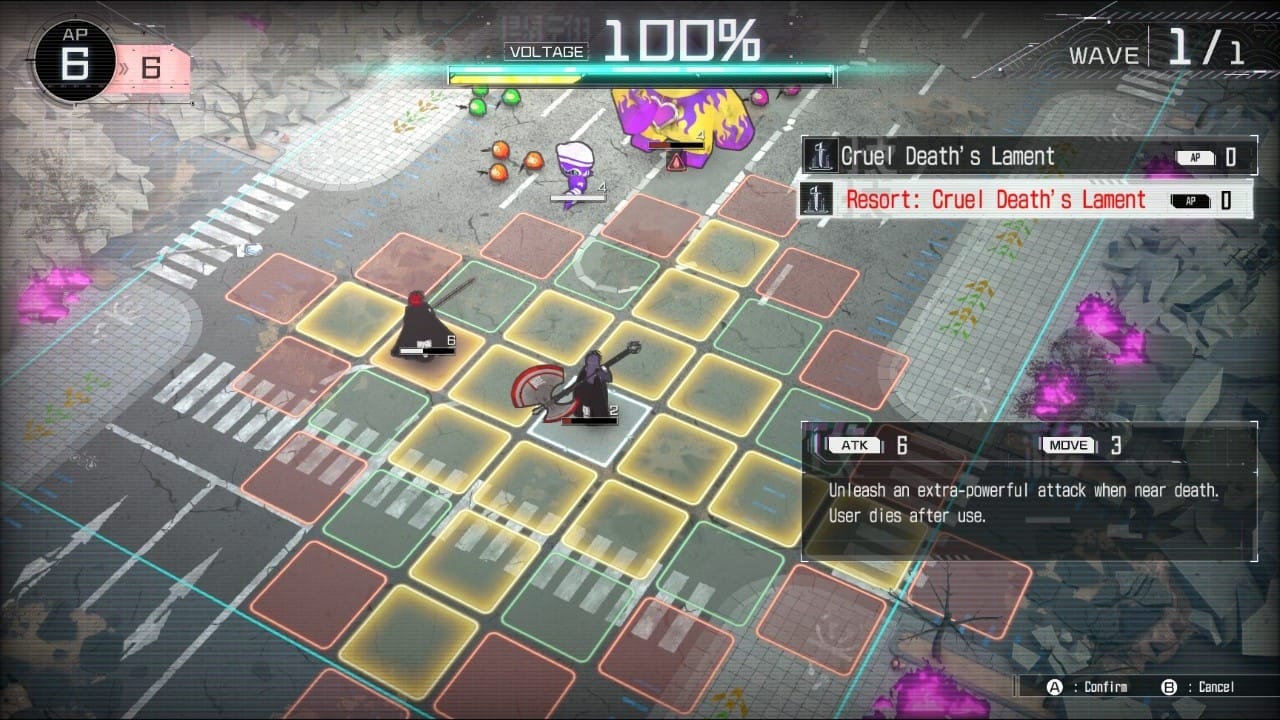
Each wave of an encounter will litter the map with a bunch of smaller enemies that can be taken down via a single hit, meaning most of the usable characters have a crowd control attack to deal with the fodder. There were bulkier enemies sprinkled across the map, which gives back a single Action Point when defeated. This gives the single target attacker in the party a vital role of taking down these foes to give the squad more actions to clear the weaker enemies. The gameplay loop boils down to getting as many Action Points as possible, and being efficient at taking down as many enemies as possible in a single turn.
Hundred Line’s most unique mechanic is with Last Resorts. When a character is about to die, they can choose to perform a Last Resort, using the last of their strength for one final AOE attack at the expense of their lives. Not to worry though, thanks to story reasons a unit who dies this way will be revived at the start of the next wave of the fight.
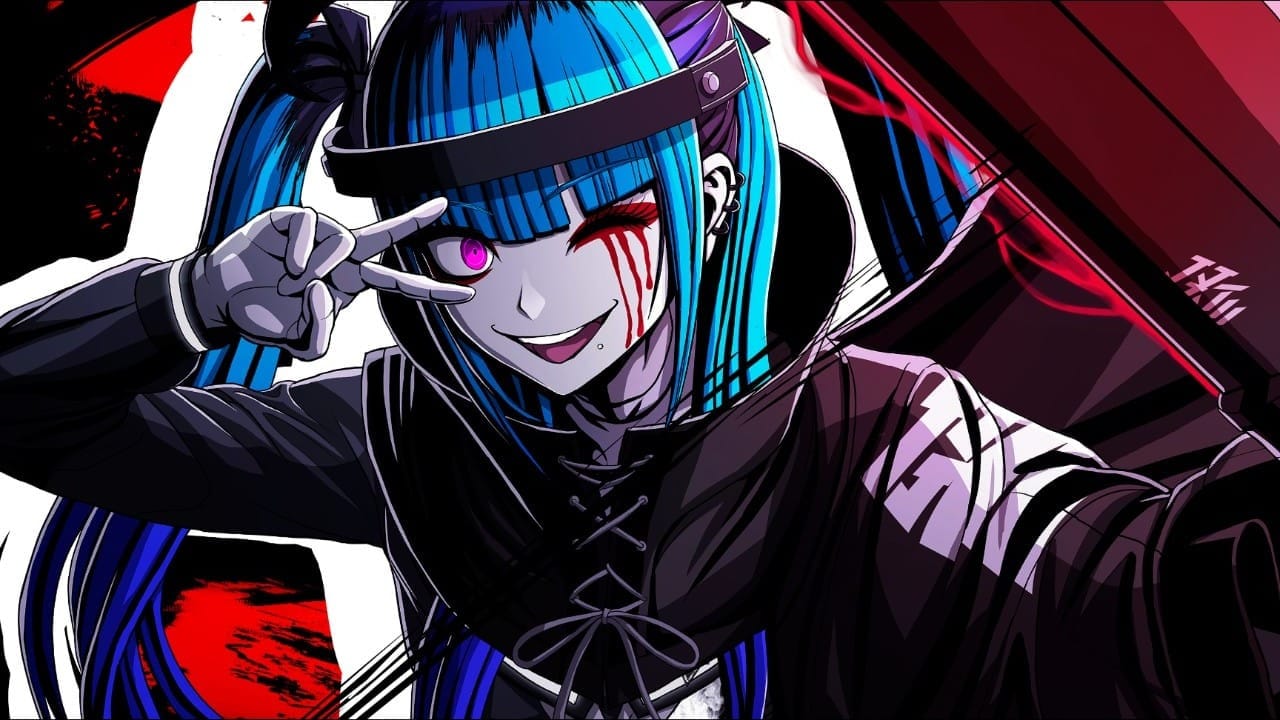
One concern I have is regarding the repetition of battles. Since the narrative frames the story skirmishes around defending the school, the victory and defeat conditions are almost always the same. Kill all the invaders, and don’t let them kill your party or break down the school’s barrier. All the story battles took place on the same flat field with no environmental terrain to take advantage of. It’s not much better in the exploration fights either, taking place on flat roads instead of a school campus. The core systems of combat are approachable, but fun to take advantage of. I hope the game spices up the map designs past these tutorial phases. Even so, fights are still short and snappy, taking around a minute or five depending on the size of the encounter. So even if the level design doesn’t evolve, it’ll likely serve as a small roadblock to get back to the story.
And for me, that is what will be the make-or-break element of this game. Hundred Line is a visual novel first, tactics RPG second based on the ratio of what the demo had to offer. I had a good time with the exploration and combat sequences, but even if they don’t hold up on what’s likely to be a lengthy adventure, it’s the story from these two legendary VN creators that will keep me coming back.
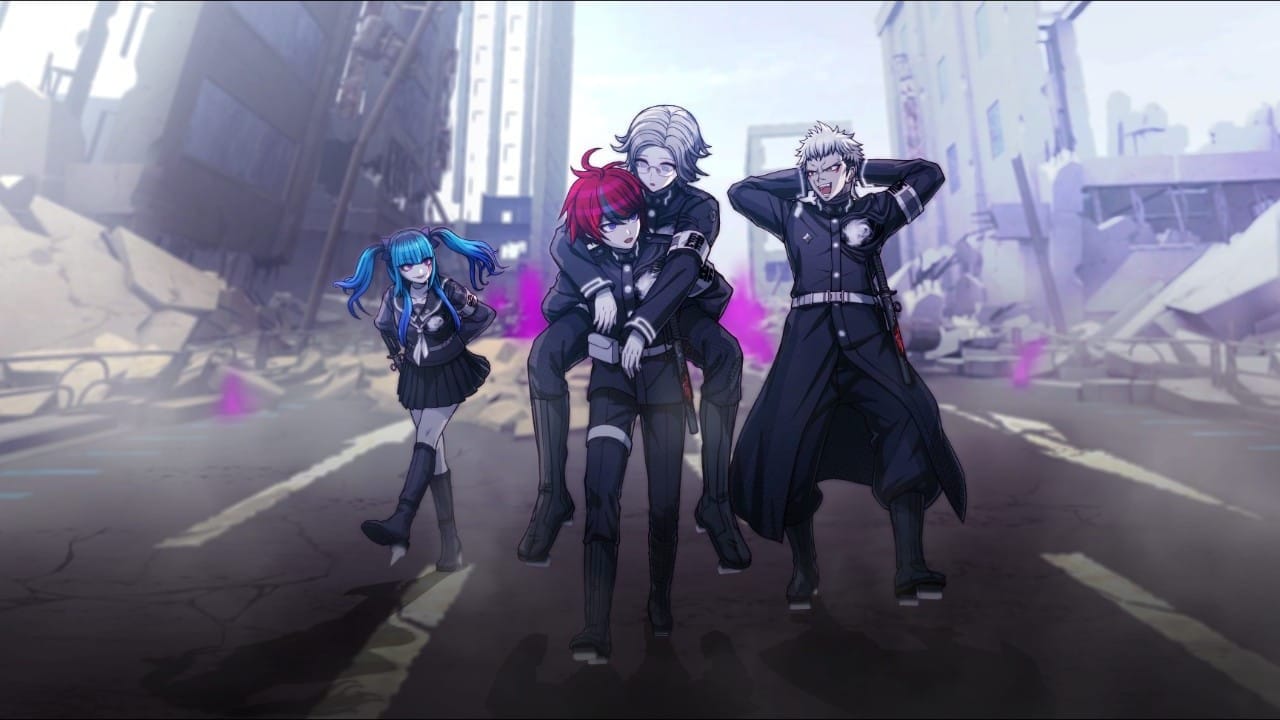
Whether it will reach the heights of Uchikoshi and Kodaka’s previous works remains to be seen. As of now though, I had a ton of fun with what I played of The Hundred Line -Last Defense Academy-. Even with my gripes and concerns, the demo did its job. It has me invested, and eager to see what happens next in this crazy tale when the full game launches on Nintendo Switch and Steam this April.
